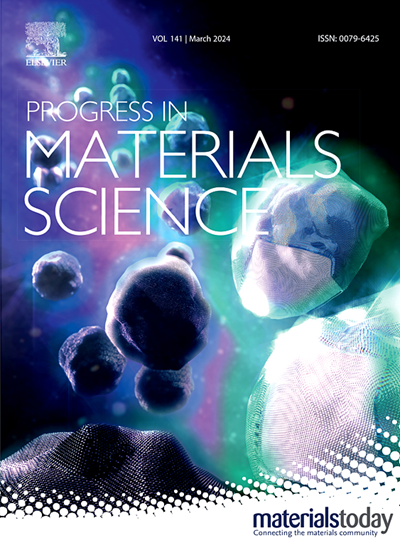Advanced fast-charging anode designs for sodium-ion batteries
IF 40
1区 材料科学
Q1 MATERIALS SCIENCE, MULTIDISCIPLINARY
引用次数: 0
Abstract
Sodium-ion batteries (SIBs) are emerging as a promising next-generation fast-charging technology due to their abundant raw resources, low cost, and low desolvation energy advantages that are especially beneficial under low-temperature conditions. However, achieving ultra-fast charging (i.e., charging times under 15 min) remains challenging. The kinetics of Na+ ions are primarily hindered by Na+ desolvation sluggish, restricted ion transport within the solid electrolyte interphase (SEI), and slow solid-state diffusion in the anode. Moreover, several fundamental challenges, such as significant volume changes during sodiation/desodiation and interfacial chemistry-induced side reactions, are further exacerbated. This review provides a comprehensive analysis of the key factors limiting the fast-charging capability of SIB anodes and outlines targeted optimization strategies, including bulk structure engineering, synergistic electrolyte design, and the controlled formation of favorable SEI layers. Representative case studies are presented to illustrate both the challenges and recent advances. Finally, this review presents future perspectives and potential pathways to guide the rational design of advanced fast-charging anode materials for SIBs.
用于钠离子电池的先进快速充电阳极设计
钠离子电池(sib)因其原料资源丰富、成本低、低溶解能量的优势,特别是在低温条件下的优势,正在成为有前景的下一代快速充电技术。然而,实现超快速充电(即充电时间低于15 min)仍然具有挑战性。Na+离子的动力学主要受到Na+溶解缓慢、在固体电解质界面(SEI)内离子传输受限以及在阳极中缓慢的固态扩散等因素的阻碍。此外,一些基本的挑战,如在钠化/脱钠过程中显著的体积变化和界面化学诱导的副反应,将进一步加剧。本文全面分析了限制SIB阳极快速充电能力的关键因素,并概述了有针对性的优化策略,包括体结构工程、协同电解质设计和有利SEI层的可控形成。提出了具有代表性的案例研究,以说明挑战和最近的进展。最后,综述了未来的发展趋势和可能的途径,以指导sib先进快速充电阳极材料的合理设计。
本文章由计算机程序翻译,如有差异,请以英文原文为准。
求助全文
约1分钟内获得全文
求助全文
来源期刊

Progress in Materials Science
工程技术-材料科学:综合
CiteScore
59.60
自引率
0.80%
发文量
101
审稿时长
11.4 months
期刊介绍:
Progress in Materials Science is a journal that publishes authoritative and critical reviews of recent advances in the science of materials. The focus of the journal is on the fundamental aspects of materials science, particularly those concerning microstructure and nanostructure and their relationship to properties. Emphasis is also placed on the thermodynamics, kinetics, mechanisms, and modeling of processes within materials, as well as the understanding of material properties in engineering and other applications.
The journal welcomes reviews from authors who are active leaders in the field of materials science and have a strong scientific track record. Materials of interest include metallic, ceramic, polymeric, biological, medical, and composite materials in all forms.
Manuscripts submitted to Progress in Materials Science are generally longer than those found in other research journals. While the focus is on invited reviews, interested authors may submit a proposal for consideration. Non-invited manuscripts are required to be preceded by the submission of a proposal. Authors publishing in Progress in Materials Science have the option to publish their research via subscription or open access. Open access publication requires the author or research funder to meet a publication fee (APC).
Abstracting and indexing services for Progress in Materials Science include Current Contents, Science Citation Index Expanded, Materials Science Citation Index, Chemical Abstracts, Engineering Index, INSPEC, and Scopus.
 求助内容:
求助内容: 应助结果提醒方式:
应助结果提醒方式:


